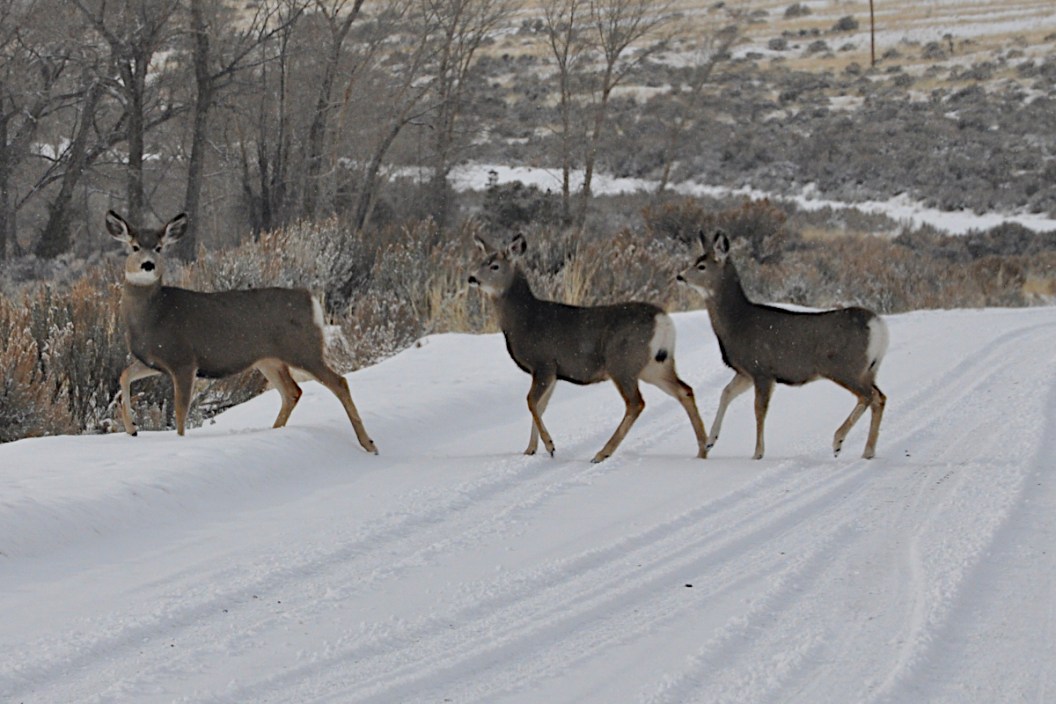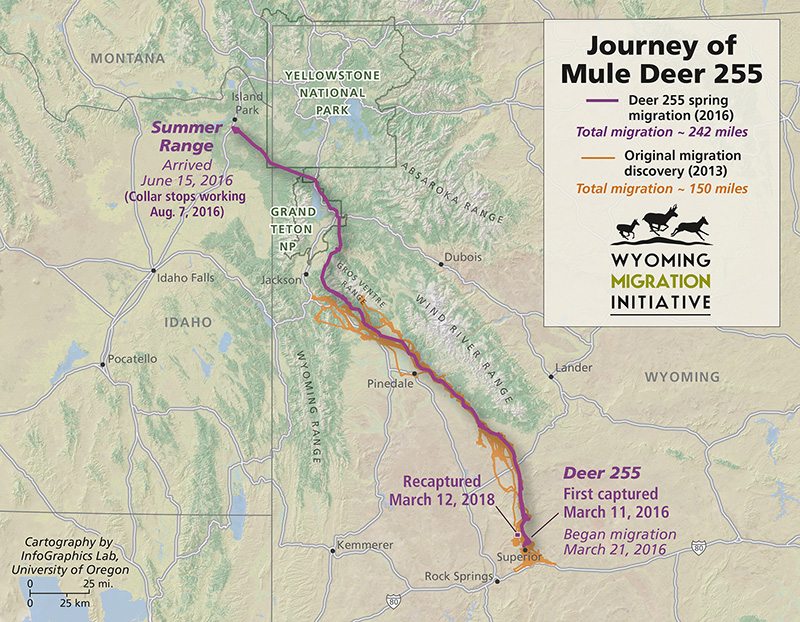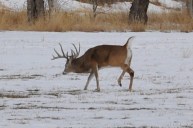This one doe once set a record for migration travel distance.
Did you ever wonder just how far a mule deer could travel during winter migrations? The answer is even crazier than you might think.
In 2018, the University of Wyoming stunned everyone by announcing that one long-lost GPS-collared doe had been found again, and it had put on some serious mileage. In the spring of 2016, a deer known as "Mule Deer 255" travelled an unbelievable 242 miles from an area outside of Superior, Wyoming, to a summer range near Island Park, Idaho.
Along the way, she crested high mountain ranges and passed through two National Parks (Grand Teton and Yellowstone). The incredible journey was a record for the longest migration route ever recorded for a mule deer.
That journey alone got researchers' attention, and they were anxious to see if she would return to Wyoming in the spring.
Unfortunately, the mule deer doe's collar malfunctioned in August 2016 and they lost track of her. Things didn't look good when they couldn't find her in the spring and summer of 2017. Graduate student and wildlife biologist Anna Ortega spent the summer of 2017 trying to retune to the radio frequency of the doe's collar, but was unsuccessful.
Pilots doing winter surveys even tried to tune into the deer's signal, but found nothing. The story could've ended there with the doe's fate a mystery, but it didn't. Ortega was working with U.S. Geological Survey Wildlife Biologist Matthew Kauffman to recapture collared deer in Red Desert, Wyoming.
This was only about 12 miles from where officials first captured Mule Deer 255. Ortega and Kauffman specifically asked helicopter crews to bring in deer outfitted with brown collars. Unbelievably, one of the deer the crews brought in was deer 255. She had travelled almost all the way back to where she was originally captured!
To put things into perspective, the previous record for mule deer on this particular stretch was 150 miles. This migrations is known as the Red Desert to Hoback corridor.
Researchers and wildlife officials were shocked to learn of the deer's travels.
"We had no idea that animals from Island Park would cross the border and head all the way down to the Red Desert," said Mark Hurley, wildlife supervisor with the Idaho Department of Fish and Game. "To date, this is certainly the longest one north and south that we've seen."
"It's pretty crazy when you throw another 100 miles on top of the longest mule deer migration," said biologist Mark Thonhoff, who works in the middle of the corridor.
Researchers still aren't quite sure what specifically made Mule Deer 255 make such an epic journey. They will likely be studying for years in order to learn more about deer migration patterns because of it.
"Deer 255 shows that Wyoming's iconic mule deer still have more to teach us about their migrations and their habitat needs," Kauffman said. "We'll be following her closely."
For more outdoor content from Travis Smola, be sure to follow him on Twitter and check out his Geocaching and Outdoors with Travis YouTube channels.
NEXT: THE AXIS DEER AND HOW THEY'RE IMPACTING PARTS OF THE UNITED STATES
WATCH






